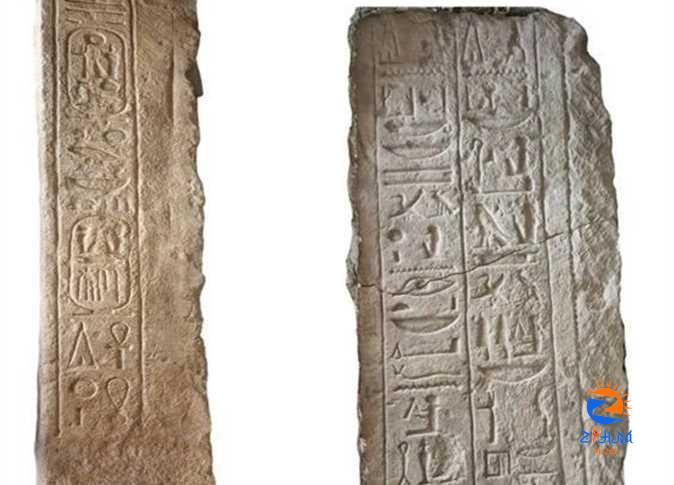
[ad_1]
The Egyptian archaeological mission, headed by Ahmed Saeed El-Kharadly, affiliated with the Supreme Council of Antiquities, has discovered a group of mud-brick architectural units for military barracks, weapons stores, and food supplies dating back to the New Kingdom era. This discovery was made during archaeological excavations in the Tell El-Abqaeen archaeological site in Hosh Issa Center, Beheira Governorate. Numerous archaeological finds and personal belongings of soldiers were also unearthed.
Mohamed Ismail Khaled, Secretary-General of the Supreme Council of Antiquities, emphasized the significance of this discovery and highlighted the historical and archaeological importance of the Abqaeen fortress, which served as one of the military garrison points for the ancient Egyptian army on the western military road. This fortress protected the northwestern borders of Egypt from attacks by Libyan tribes and the Sea Peoples. He noted that the discovered architectural units have a regular layout and are divided into two symmetrical groups with a small passageway between them, indicating the skill of the ancient Egyptian engineer and his ability to utilize the surrounding environmental elements and adapt them to serve various purposes.
On his part, Ayman Ashmawy, Head of the Egyptian Antiquities Sector at the Supreme Council of Antiquities, explained that preliminary studies of the discovered artifacts confirm that some of the architectural units were used as stores to supply soldiers with food and provisions daily. Inside, large silos were found containing remnants of large pottery vessels for storing the remains of fish and animal bones and some fragments. Pottery ovens in a cylindrical shape were also found, which were used for cooking food.
The mission found a long bronze sword decorated with engravings of the cartouche of King Ramses II, in addition to a group of artifacts that shed light on the daily activities of the fortress’s inhabitants, their religious and military beliefs, such as weapons used in wars, hunting tools, and personal adornment and hygiene tools, such as kohl pots made of ivory, beads and amulets made of red carnelian and faience, and amulets for protection.
Among the most important discoveries at the fortress was the burial of a cow, a symbol of strength, abundance, and prosperity, as the cow was distinguished as a celestial deity. Two limestone blocks were found, one with hieroglyphic writing of the titles of King Ramses II, and the other of an official named ‘Bay’. A faience scarab was found, decorated with an inscription of ‘Amun, Lord of the Sky’, with a lotus flower above his name. Another scarab carried the god ‘Ptah’ on its base, made of schist, and half a bronze ring with an inscription of the god ‘Amun-Hor Akhty’, and two necklaces of faience and carnelian in the shape of a Roman flower.
[ad_2]